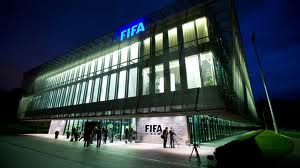By Paul Nicholson
April 24 – Detail is starting to emerge on FIFA’s proposed $25 billion revamp of its global competitions structure. With FIFA Bureau members heading for Zurich for emergency meetings and FIFA saying it will call an unscheduled FIFA Council meeting before its Congress in June, FIFA president Gianni Infantino’s cards, or at least some of them, are slowly being laid out on the table.
At the centre of the proposal is an expansion of Club World Cup to a 24-team event held every four years, rather than the annual seven-team competition. Also at the core of the proposal is taking the just launched UEFA’s Nations League structure and branding it FIFA and turning it into a global competition.
The current Confederations Cup – played as a test event the year for the World Cup proper – would be scrapped completely. To clear space in the calendar (and presumably organisational capacity) FIFA’s administration at its last FIFA Council meeting attempted to scrap all youth competitions bar one age-group championship. Council have already rejected that proposal.
So what would the new 12-year competition schedule look like?
Club World Cup
- June event every four years
- 24 teams split into eight groups of three
- 12 clubs from Europe including last four winners of the last four Champions League competitions
- Competitions in 2021, 2025, 2029, 2033
- $3 billion guarantee for each competition
- FIFA says competition to be played in a the “host market” that has a “strong appetite for football”. Which suggests big league/big money countries only
Nations League
- FIFA would take over the UEFA and CONCACAF plans in place for their own Nations Leagues just launched
- Countries ranked into a league structure and divided into groups of four teams, ensuring six games for each national team
- Top teams would qualify for a ‘Final 8’ tournament in the following year”.
- Minimum financial guarantee of $1 billion for the rights of the first edition in 2020-21.
- This would rise to $4 billion for three further editions between that date and 2033.
What’s the deal?
The shape of the deal proposed is many ways the most controversial of the proposals from Infantino. If FIFA’s Council were to agree they are effectively giving away 49% of the rights to these competitions to financial investors. FIFA currently owns 100% of all its competitions.
The rights to the new competitions would be structured into a new company in which FIFA would hold a 51% majority. That company’s board would control the rights, not FIFA, its Council or its membership. This is a crucial governance distinction to be understood as is the national jurisdiction of the new company formation.
Infantino maintains that FIFA would maintain overall control on ‘important’ decisions – including those of a sporting nature. The reality is that actually the new company board would control the big decisions – particularly around anything to do with money – and FIFA would have a say via its 51% board representation.
The board are unlikely to have any interest in sporting decisions, they will be in it for the money, but the sporting decisions will be expected to reflect that. Investors will want a significant return on their $25 billion whether FIFA have 51% or not – ultimately money doesn’t discriminate or hold any kind of moral attribute, not even for football. Investors will have a set of priorities that will mean looking after the financial interests of their own shareholders. They will not necessarily align with the mission statements in FIFA’s statutes.
Japan’s SoftBank are said to be behind the consortium of investors but the identity of those investors is unknown but are likely to Middle Eastern and Asian if the profile of SoftBank’s investor base is an indication.
Who the investors are, their track records and due diligence on their investment history should be crucial to any decision by FIFA’s Council. But is appears as though that information may not be forthcoming with Infantino so far having only described the investors as “among the world’s most solid”. Not an entirely reassuring endorsement at this stage.
Who will be for and who will be against?
Club World Cup: Infantino has adopted a policy of divide and conquer by going behind the backs of the stakeholder industry bodies and directly to clubs. This has angered both the European Club Association as we well as UEFA as it is a clear attempt to bypass them. Clubs generally follow the money – and they always want money – so it is likely that some owners would back Infantino. But whether it is enough to create an integrity-strong billion dollar competition structure remains to be seen.
Nations League: UEFA are furious that FIFA are in essence stealing their competition and calendar and turning it into their own cash cow – effectively eating their lunch. CONCACAF are unlikely to be so angry as their three leading nations – the US, Mexico and Canada – have other FIFA ambition around the 2026 World Cup hosting. CONCACAF president Victor Montagliani has been a leading cheerleader for Infantino every time his integrity has come into question. Montagliani’s usefulness will likely come into play again.
What’s at stake?
Pretty much everything in terms of the global football calendar, including possibly the future of FIFA itself and its president. UEFA for one would be forgiven for wondering what they really need FIFA for as they are unlikely to roll over and let FIFA eat their lunch withoutn a vigorous challenge.
Contact the writer of this story at moc.l1741291752labto1741291752ofdlr1741291752owedi1741291752sni@n1741291752osloh1741291752cin.l1741291752uap1741291752

